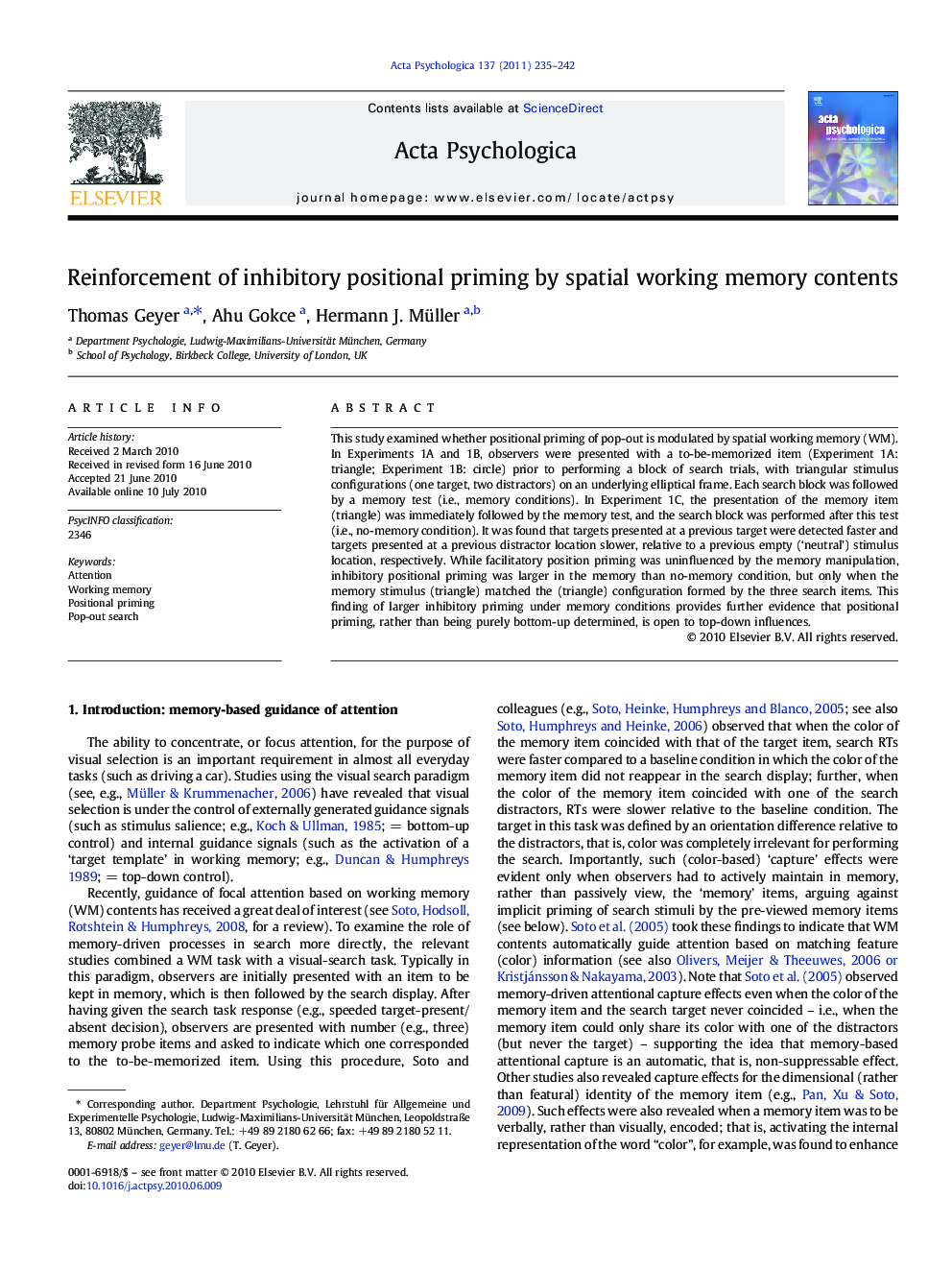| Article ID | Journal | Published Year | Pages | File Type |
|---|---|---|---|---|
| 10453866 | Acta Psychologica | 2011 | 8 Pages |
Abstract
This study examined whether positional priming of pop-out is modulated by spatial working memory (WM). In Experiments 1A and 1B, observers were presented with a to-be-memorized item (Experiment 1A: triangle; Experiment 1B: circle) prior to performing a block of search trials, with triangular stimulus configurations (one target, two distractors) on an underlying elliptical frame. Each search block was followed by a memory test (i.e., memory conditions). In Experiment 1C, the presentation of the memory item (triangle) was immediately followed by the memory test, and the search block was performed after this test (i.e., no-memory condition). It was found that targets presented at a previous target were detected faster and targets presented at a previous distractor location slower, relative to a previous empty ('neutral') stimulus location, respectively. While facilitatory position priming was uninfluenced by the memory manipulation, inhibitory positional priming was larger in the memory than no-memory condition, but only when the memory stimulus (triangle) matched the (triangle) configuration formed by the three search items. This finding of larger inhibitory priming under memory conditions provides further evidence that positional priming, rather than being purely bottom-up determined, is open to top-down influences.
Keywords
Related Topics
Life Sciences
Neuroscience
Cognitive Neuroscience
Authors
Thomas Geyer, Ahu Gokce, Hermann J. Müller,
